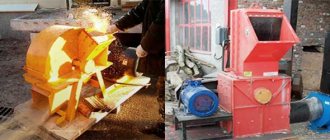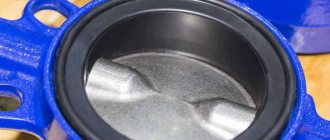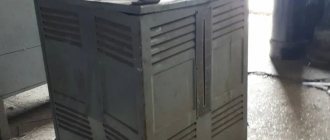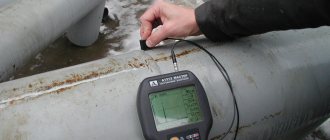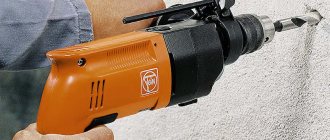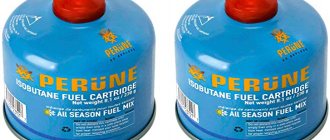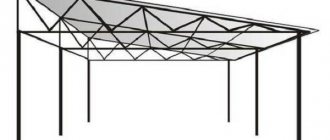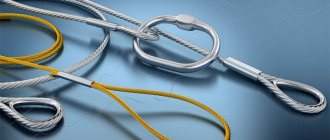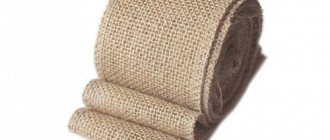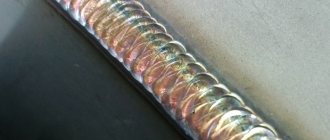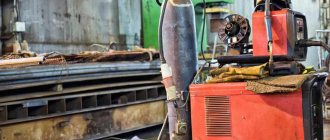Hydraulic cylinders are important power mechanisms for various garage equipment. For example, they are installed in lifting platforms, presses, jacks, transmission stands, and jib cranes. Compared to pneumatic, mechanical or electrical linear motion systems, hydraulics are simpler, more durable and provide a high power density.
Thousands of hydraulic cylinders of various types and sizes are sold on the Belarusian industrial equipment market. This variety creates confusion in the minds of consumers. In this article you will receive 12 practical tips. They will help you buy a hydraulic cylinder that will be reliable, powerful, and well suited for your tasks.
Types of hydraulic cylinders
Find a design that suits your equipment
Single rod hydraulic cylinders
- Unilateral action. The working stroke of the rod is carried out only in one direction, and the return of the rod is provided by additional force, for example, by means of a spring. One connector is used to connect to the hydraulic system. These hydraulic cylinders come in two varieties:
- direct action (working stroke - pushing);
- reverse action (working stroke - tightening).
Direct-acting hydraulic cylinders are often used in presses and jacks, and reverse-acting devices are often used in hydraulic couplers.
Multi-rod hydraulic cylinders
They also come in single-acting and double-acting types.
ANALYSIS OF COMPANIES MANUFACTURING POWER CYLINDERS
Many enterprises around the world are engaged in the production of hydraulic cylinders.
Let's name the most famous foreign companies that have been recognized for the high quality of their manufactured power hydraulic cylinders:
Atos, Bosch Rexroth, Duplomatic, Eaton Vickers, Parker.
Domestic enterprises have long and reliably secured their positions in the niche of creating hydraulic cylinders:
1) Omskgidroprivod - production of 16MPa hydraulic cylinders for mobile equipment and lower pressure for combine harvesters.
2) Yeletshydroagregat (Elets, Lipetsk region) - produces hydraulic cylinders for road construction, municipal, agricultural and logging equipment.
3) StroyDorMash (Oryol) – hydraulic cylinders 14, 16 and 21 MPa, spare parts and rubber products (rubber products) for hydraulic cylinders.
4) Gidrolast (St. Petersburg) – produces large batches of hydraulic cylinders and integrates manufactured hydraulic cylinders into final products.
5) Finaros (St. Petersburg) - telescopic GCs and hydraulic cylinders for hydraulic manipulators.
6) Artillery Plant No. 9 (Ekaterinburg) – hydraulic and pneumatic power cylinders of single- and double-acting up to 80 MPa, diameter up to 300 mm, length up to 4000 mm.
7) Aggregate plant (Lyudinovo, Kaluga region) - hydraulic drives, pumping stations, units and installations, pumps, hydraulic motor DP510I, pump NP 120, hydraulic cylinders GU80X50X710, SN75M-63X50X90, filters, high pressure hoses, hydraulic valves).
Frame
Choosing between cast and tensioned housings
Typically, hydraulic cylinders with two types of housing are found on sale: welded or tensioned (with studs). In the first case, the covers are welded to the sleeve, in the second, the covers are pressed to the sleeve using pins
What is a hydraulic cylinder?
What are hydraulic cylinders?
Hydraulic cylinders (hydraulic cylinder) are all around us, we see them all the time in our daily lives, perhaps without even realizing it unless we're deliberately paying attention: in excavators, trucks, forklifts, tractors, aerial platforms, mining equipment - you name it . A hydraulic cylinder is one of the four main components of a hydraulic system, while a hydraulic system is a technology in which a fluid, most often hydraulic oil, is used to transfer power from a motor to an actuator: most often a hydraulic cylinder.
A hydraulic cylinder is part of a machine's hydraulic system. Simply put, a hydraulic cylinder is a hydraulic actuator that creates linear motion by converting hydraulic energy back into mechanical motion. A hydraulic cylinder can be compared to a muscle; With the help of the machine's hydraulic system, it creates movement - so it is like a muscle.
In a hydraulic transmission, the medium is a fluid, usually oil, which we also talk about in this text. The basic concept of hydraulics is that when a pump is rotated by a power machine, a volumetric flow is generated (the volume of fluid passing through a cross section per unit time, the SI unit of which is m3/s). The pressure in a hydraulic system is determined by the load caused by either the cylinder or the valve, which then resists the flow of fluid caused by the hydraulic pump.
Pressure is distributed evenly in all directions of the system and acts evenly on the surfaces of all enclosed spaces of the hydraulic system; this effect is called Pascal's law.
Fastenings
Determine the optimal mounting method
The mounting method depends on the degree of mobility the hydraulic cylinder needs to operate as part of a machine or equipment. If the cylinder body must remain stationary during operation (for example, on a hydraulic press), then fixed end fastenings are used: flange supports, lugs, side fastenings on legs or feet.
Choose a hinged mount if the cylinder body must move
Swivel mounts allow the hydraulic cylinder to change position during operation. These include fastenings on hinges, trunnions, forks and spherical bearings. The recommendations here are as follows:
How to choose a hydraulic cylinder
I think many of you who have encountered the repair of a dump truck, and in particular the replacement or repair of a hydraulic cylinder, have puzzled over the question - “ How to choose a hydraulic cylinder ?” Indeed, a hydraulic cylinder is not a small thing and not at all light. Going to the store with her and picking up a hydraulic cylinder according to the sample is not an option. There is a way out of this situation, and there is more than one. The easiest way is to write off the number of the hydraulic cylinder. The number is stamped on a plate located at the base of the hydraulic cylinder. The number you need looks something like this: FE 129-3-03880-001A-K1609. Letters and numbers, of course, will be different. But it happens that the plate is lost or, if there is one, it is in such a state that it is not possible to read the number on it. In this case, I advise you to resort to the “old-fashioned” method, armed with a sheet of paper and a pencil. Even if this doesn’t help, there’s nothing left to do—let’s go get a tape measure. We will need to remove four sizes. The main condition for this procedure is a fully folded hydraulic cylinder . So, remove the cap from the top of the hydraulic cylinder, if it is still intact. The first thing we see under this cap is the rod and nut. Now, armed with a tape measure, we measure the distance from the top point of the rod to the center of the lower support. This 1 shows how to take this measurement. Let's write down this size, denoting the resulting value with the letter “H”. Let's move on to the next size. Now we need to measure the distance between the upper and lower supports of the hydraulic cylinder . The size is taken from the centers. In order not to catch the center of the supports “by eye,” we turn on our ingenuity and measure as follows: For the first point we take the lower part of the lower support, and for the second point, the lower part of the upper support. Figure 2 shows how to do this. We measure the distance between the points and write down the resulting value, denoting it with the letter “K”. Now we measure the distance from the bottom of the hydraulic cylinder to the center of the lower support of the hydraulic cylinder. You can see how to remove the size here. And again we write down the resulting value, denoting it with the letter “J”. Let's begin the penultimate act of our ceremony. We measure the distance from the center of the lower support of the hydraulic cylinder to the center of the oil supply hole. Schematically, this action is depicted in this. Let's write down the resulting value, denoting it with the letter “L”. Having written down all the values, we proceed to the last step - We pick up the phone, dial +7 (963) 644-7060, dictate the sizes previously indicated by letters, wait 5-10 minutes, and receive information about the price, availability, and delivery options. In principle, it is not a very complicated procedure. I think there is only one question left: what to do if the hydraulic cylinder has an ear on top, and not a rod with a nut? It's simple. Size “H” is measured from the center of the lower support to the very edge of the ear. See picture. And dimension “K” is taken from the center of the lower support to the center of the hydraulic cylinder ear. The remaining values are measured using the method described above. Then we move on to the action with the phone. I hope I answered the question: How to choose a hydraulic cylinder ?
Dimensions
When purchasing cylinders, take into account the length and diameter of the body, proportions, as well as the stroke length of the rod.
The low profile hydraulic cylinder has a short body, suitable for installation in confined spaces. However, its rod stroke is also short. On the contrary, a long hydraulic cylinder has a long stroke, which gives more adjustment possibilities.
Cylinder parameters such as stroke and force developed must meet the requirements of hydraulic equipment. However, this is only half the battle. It is advisable to check whether the actual parameters of the hydraulic cylinder meet the characteristics declared by the manufacturer.
Pay attention to the diameter of the piston rod
A weak piston rod is a common cause of rapid wear or failure of a hydraulic cylinder. If the main task is pushing, then insufficient thickness of the drain will cause it to bend or collapse. To ensure the integrity of the manufacturer, look at the diameter in the technical specifications and check its correctness using formulas.
For long hydraulic cylinders, consider the stroke length to prevent the rod from bending
Rod stroke is the distance required to push or pull a load. In long stroke cylinders, the fully extended rod is subject to excessive bending, sometimes even under its own weight. This leads to wear and damage to seals and bearings. Select a long rod so that the deflection does not exceed 1-2 mm.
Loads and safety
Consider shock loads
When the rod extends or retracts all the way, the piston can create a shock load at the end of its stroke. To avoid this, hydraulic cylinders use internal shock absorbers or mechanical stops. To safely reduce load, proportional valve technology is sometimes used to accurately measure fluid flow.
Analyze the correspondence of the cylinder diameter to the working pressure
To develop the same effort, you can choose one of two options:
1) a large diameter hydraulic cylinder operating at low pressure;
2) small diameter hydraulic cylinder operating at high pressure.
Hydraulic systems of the second type are more economical, because small cylinders cost less, require less working fluid, smaller pumps, pipelines, valves, etc. Thus, by switching to higher pressures, costs are often reduced. However, hydraulic systems should never exceed the cylinder's rated pressure design.
Don’t neglect the reserve for the developed force
Keep in mind that real loads are usually higher than in theoretical calculations, so additional effort may be required to complete the work. It is better to buy a hydraulic cylinder 20% more powerful than required. This compensates for losses from friction, unexpected drops in system pressure, leaks in seals, etc.
CONSTRUCTION DIAGRAMS AND TYPICAL PERFORMANCE CHARACTERISTICS
The design diagrams of power hydraulic cylinders are shown in Fig. 5.
Figure 5 – Design diagrams of hydraulic cylinders:
piston with one-sided (a) and double-sided (b) rod; telescopic (in)
The main parameters of the cylinders are regulated by GOST 6540-68.
The following rows are installed:
nominal pressure р nom , MPa: 0.63; 1; 1.6; 2.5; 6.3; 10; 16; 20; 25; 32; 40; 50; 63;
piston diameter D , mm: 10; 12; 16; 20; 25; 32; (36); 40; (45); 50; (56); 63; (70); 80; (90); 100; (110); 125; (140); 160; (180); 200; (220); 250; (280); 320; (360); 400; (450); 500; (560); 630; (710); 800; (900);
rod diameter d , mm: 4; 5; 6; 8; 10; 12; (14); 16; (18); 20; (22); 25; (28); 32; (36); 40; (45); 50; (56); 63; (70); 80; (90); 100; (110); 125; (140); 160; (180); 200; (220); 250; (280); 320; (360); 400; (450); 500; (560); 630; (710); 800; (900);
piston (plunger) stroke s , mm: 4; 6; 8; 10; 12; 16; 20; 25; 32; 40; 50; (56); 63; (70); 80; (90); 100; (110); 125; (140); 160; (180); 200; (220); 250; (280); 320; (360); 400; (450); 500; (560); 630; (710); 800; (900); 1000; (1120); 1250; (1400); 1600; (1800); 2000; (2240); 2500; (2800); (3000); 3150; (3350); (3550); (3750); 4000; (4250); (4500); (4750); 5000; (5300); (5600); (6000); 6300; (6700); (7100); (7500); 8000; (8500); (9000); (9500).
In accordance with GOST 25020-84, connecting threads of rods and plungers should be selected from the following range: M3×0.35; M4×0.5; M5×0.5; M6×0.75; M8×1; M10×1.25; M12×1.25; M14×1.5; M16×1.5; M18×1.5; M20×1.5; M22×1.5; M24×2; M27×2; M30×2; M33×2; M36×2; M42×2; M48×2; M56×2; M64×3; M72×3; M80×3; M90×3; M100×3; M110×3; M125×4; M140×4; M160×4; M180×4; M200×4; M220×4; M250×6; M280x6.
Depending on the purpose of the hydraulic cylinders, the pressures must correspond to those indicated in the table. 1.
The maximum speed of the rod relative to the hydraulic cylinder body is indicated in table. 2.
Table 1 Working fluid pressure
Table 2 Allowable rod speed
Performance Criteria
Pay attention to the quality of seals
Seals are the most vulnerable part of a hydraulic cylinder. About 90% of breakdowns occur through their fault. High-quality seals reduce friction and wear and increase service life. Pay attention to the material. Standard rubber seals serve well at temperatures from -20°C to +60°C. Thermoplastic polyurethane (TPU) is suitable for operation from -35°C to +100°C. At temperatures above 100°C, seals made of phenolic rubber or fluorine rubber are required.
Drainage system simplifies maintenance
To prolong the life of seals, they should be serviced periodically. If the hydraulic cylinder is located in a hard-to-reach location, maintenance becomes difficult.
For these cases, it is better to buy hydraulic cylinders with a special drain hole located between the primary and secondary seals, or between the primary and rod seals. If the primary seal becomes damaged and begins to leak, the oil flows out through the drain hole into a transparent container provided. This provides a visual indication that the seals are almost worn out and will soon require replacement.
Pay attention to the materials
The durability of a hydraulic cylinder largely depends on the materials of the support, fastenings and rod bearings. Rod bearings are usually made of bronze alloy, and supports and fastenings are made of medium carbon steels. For high loads, ductile iron rod bearings are recommended. In addition, at temperatures below -20°C, parts made of medium carbon steel become unstable to impact loads. In cold climates, hydraulic cylinders made from alternative materials may be necessary.
Since the piston rod is in contact with the external environment, resistance to moisture, salt solutions and other aggressive substances is important. Good piston rods are made of stainless steel with multi-layer chrome plating. Some hydraulic cylinder manufacturers offer unique, patented protective coatings.
History of hydraulic cylinders
Controlling the movement of fluid is nothing new; the phenomenon has been used to generate energy for decades. Hydraulic power is a term originally derived from the idea that ancient people used water to push levers and turn wheels. This principle is still used to create powerful forces. French physicist Blaise Pascal observed that a given amount of fluid exerts equal forces in all directions and that these forces can be controlled. Later, in 1795, Joseph Bramach patented the first hydraulic press. It was later observed that oil is a better hydraulic fluid than water. Due to its certain properties, such as high density, it does not cause corrosion, withstands higher loads and resists evaporation. Hydraulic power is increasing every year. Many applications include, for example, the construction of skyscrapers, cranes, aircraft landing gear, moving heavy objects,
Hydraulic cylinders are linear actuators that use fluid pressure to resist movement under load. This device also helps in pushing and pulling the load. They ensure that fluid moves in a straight line. They are also called actuators. A hydraulic cylinder (hydraulic cylinder) is actually a device that converts pressure energy into mechanical energy. They are used to transfer energy. Power output depends on pressure drop around the actuator, flow rate and overall efficiency. There are different types of hydraulic cylinders such as
- Single acting cylinders
- Tandem cylinders
- Double acting cylinders
- Telescopic cylinders
- Through-rod cylinders
- Displacement cylinders
Top hydraulic cylinders
In Minsk, you can buy hydraulic cylinders in the Redmaster store. According to its assortment, the top of the following popular models is compiled:
Forsage F-YG20050S
The Forsage F-YG20050S hydraulic cylinder provides an impressive force of up to 200 tons. At the same time, it is quite compact: diameter – 228 mm, length – 217 mm. The rod stroke is possible in both directions and reaches 50 mm. When using this “strongman”, keep in mind that it weighs 67.5 kg.
Forsage F-0210
The Forsage F-0210 reverse-acting hydraulic cylinder develops a tightening force of up to 10 tons. The long chrome-plated rod has a reverse stroke of 130 mm. There are strong hooks on both sides. Case length – 715 mm. This model can be used with a set for stretching and straightening automobile bodies, as well as metal structures.
ROCK FORCE RF-1303-1
Hydraulic cylinders of the Rock FORCE RF-1303-1 series are available in two housing sizes - 176 mm and 276 mm long. The stroke of the rod is respectively 50 mm or 150 mm. The developed force can reach 20 tons. Users appreciate these models for their reliability and reasonable price.
ROCK FORCE RF-T30808
The long hydraulic cylinder Rock FORCE RF-T30808 has a reinforced design that provides a force of up to 8 tons. With a body length of 620 mm, the rod stroke reaches 500 mm. Users note the quality of workmanship, ease of use and low maintenance.
To buy hydraulic cylinders in Minsk, contact the Redmaster store. There are dozens of models from the brands Forsage, Rock FORCE, Forcekraft, JTC, Partner at low prices.
